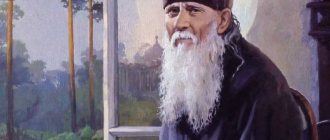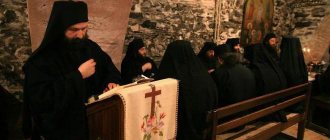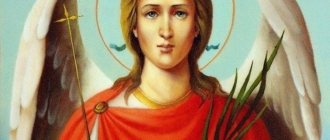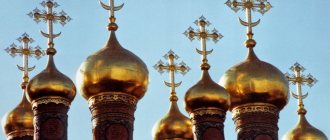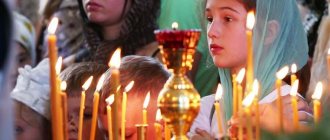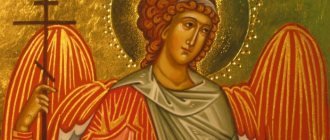There have never been reforms in Eastern Orthodoxy. There has never been a rational review of its catalog of Saints. This explains the number of mythical saints depicted on icons long ago and still appearing in the church calendar today. Revered Saints, although their reality is equivalent to the reality of Mashenka and the Three Bears.
One of the most interesting is the group of saints known as the “Seven Sleeping Saints of Ephesus.”
Izmir 10: The Seven Youths and the House of the Virgin Mary in Ephesus: many myths and zero evidence
13:21, September 02, 2018
On the last day of vacation in Izmir, we bought a tour to Ephesus
(I talked about this ancient city in yesterday’s post),
after visiting which the bus took us to the Cave of the Seven Sleeping Youths (Orthodox name), then to the House of Mary the Virgin. All three historical monuments are located in approximately the same district, the distance between them is about 20 minutes. The places are truly biblical, surrounded by low mountains covered with low vegetation, many olive trees, and wetlands between the mountains.
We drove past Turkish villages in which there are very few old houses left, since the population lives in fairly comfortable one-and-a-half-story houses with the obligatory large balcony the size of a courtyard. I liked that there are no fences at all in our Azerbaijani-Russian understanding! The territory of one Turk is separated from the neighbor’s only by a metal mesh, sometimes stretched over a meter-long stone wall. From the outside you can see everything that is in the yard and on the balcony of a Turkish family, this does not prevent them from living comfortably. I like. Maybe the reason for the lack of fences is that the Turks are very prudent and economical; they don’t spend money on unprofitable fences. On the roofs of all Turkish houses there is always one or even two solar water heaters of a simple and identical design. And the roofs are only tiled, dark red. I saw the metal roof that covers houses in Azerbaijan only on restaurants and economic facilities. A tile roof is cheaper, beautiful, but requires regular inspection and replacement of cracked tiles. The Turks' adherence to the traditional form of roof covering also surprised me. But maybe it’s due to strict local rules requiring the population to preserve the historical appearance of their houses. The guide said that you can plant trees in these places, but you cannot build without permission, since the land is replete with historical values. Until archaeologists dig up the site, it will be inviolable.
I didn’t know or even heard about the Seven Youths and the House of the Virgin Mary, since I’m not interested in religion, preferring not to believe what is not explained by science. We were brought to the cave and a complex of buildings that was then built around it, in which the arks with the bodies of the dead were kept. The legend of the Seven Sleepers (as the Turks call them) is written in Christian books, and there is its own version in the Koran. Muslims revere this Seven.
Briefly, the legend says that seven convinced Christians were walled up in a cave as punishment for abandoning this new religion at that time. But they did not die, but slept for 200, according to other sources, 300 or more years - so God saved them. Having woken up, the six sent the seventh to buy bread. They thought that they had slept for one day (although the gray beards that had grown over 200 years should have indicated to them another period). In the world, someone sent for bread offered a coin he had, and the seller, naturally, was surprised to see the ancient coin being held out and decided that in front of him was a criminal grave digger. The awakened man was taken to the “investigative authorities.” Having heard about the incident, the king himself decided to check the words of the detainee and found six more in the cave.
According to the Islamic version, there was a dog with them, which also slept for several centuries. Since then, this seven has been considered proof of the presence of God and his miracle of resurrection.
Read more about this story in the literature; below I have given the text from Wikipedia.
In reality, I don’t believe in this story, in the possibility of sleeping without dying for 200 or more years. At that time, Christianity needed confirmation, so they came up with the story of the Seven Youths. It is human nature to believe in what he wants to believe. There are many examples of this, but at least our latest events: the criminal blown up by the Ukrainian special services in Donetsk, who would be called a criminal by all countries including Russia if he were an armed separatist among them, is called a hero by my readers. It’s very simple - they want to see him as a hero, so they see him without noticing the facts and denying the law when it is not beneficial to them. If that scoundrel had moved his crimes, say, to the territory of Armenia, stirring up an armed rebellion of the local ethnic minority there, my readers would have rejoiced at his death and described what a scumbag he was. So I’m not surprised, I state the fact of the stupidity of human nature.
After visiting the houses and the cave of the Seven Youths - and this place is dusty, along the edges of the road there is a lot of small garbage that has not been collected from tourists: plastic bottles, cigarette butts - we arrived at the House of the Virgin Mary. This place is perfectly maintained and equipped, clean everywhere, security, paved paths, cafes and souvenir shops built, entrance fee.
The history of the last house of Mary the Mother of God is also practically written out of thin air. There is no evidence of her living in this particular house, where she allegedly came from Jerusalem in the 43rd year of her life. The story is collected from the stories of the German woman Katharina, which is insignificant for a serious researcher, who quite recently, in the eighties of the 20th century, dreamed of the life of the Virgin Mary in Ephesus in detail. A certain Christian who believed in her stories conducted his own investigation, studied books, interviewed local residents, compared the geography, shape and river sources of the hills in Ephesus with the visions of the German woman and decided that he had found a place where the house of the Virgin Mary could have been. A foundation was discovered, several layers of brick wall. The rest was thought out and built later, so that only the foundation of the brick house, consisting of an entrance hall and two rooms, is ancient. Photography inside the house is prohibited. In the hallway there is a photograph of a German woman on whose body blood appeared, and in the same places where the blood of Christ flowed on the cross. She also received visions of the final refuge of the Mother of God. It is better to read the exact details in Wikipedia or other sources.
Now a well-functioning tourist complex in Ephesus generates constant income.
It consists of the House of the Virgin Mary, a wall in which tourists put notes with wishes and four springs, water flows out of one wall.
According to legend, three springs guarantee health, love and money to those who drink the water - each spring gives only one. The guide kept silent about the fourth. I tried the water from each source, it was equally tasteless and not even drinkable. It is clearly supplied through one pipe, divided into springs by ordinary plumbing tees.
The story of the final resting place of the Mother of God is more like a manifestation of the same urgent Christian desire to convince people of the reality of what is preached. It turns out that there are other places in the world where the mother of the Christian God-man is believed to have lived. And the most popular was the option in Ephesus.
Reader Yunus Pasha writes to me on Fb that transferring the legend of the Mother of God to Ephesus, to Turkish soil, is the malicious intent of Christians who planned to seize the land of Muslims and invented the House of the Mother of God for this. It looks like the campaigns of the crusaders to “liberate the land of Christ”, in which they did not free anyone, but plundered a lot.
For me, the main thing is the complete lack of scientific evidence of Mary's residence in Ephesus. With the same success, you can concoct a cult-tourist object in Novkhany, and I will collect the profits.
Azerbaijan has its own religiously profitable objects: in Khachmaz, Mount Beshbarmag, at the foot of which those driving along the highway leave millions in donations. Nardaran has its own gigantic temple with a well-functioning donation collection system. Where does this money go, who appropriates it and how much did he spend on building numerous cafes and shops there? How much does he get from rent and does he pay taxes? A 100% profitable business based on the absolutely blind faith of millions.
Wikipedia articles:
Seven Youths of Ephesus
,
(Seven Sleeping Youths; Seven Holy Youths, also in Ephesus; Seven Youths, Sleeping in Ephesus)
- Christian martyrs, walled up alive in a cave and slept there for several centuries. Also revered in Islam
Martyrdom The Seven Youths lived in the 3rd century. Saint Maximilian, one of them, was the son of the mayor of the city of Ephesus, the other six of his friends also came from the Ephesian aristocracy, and all of them were in military service and were Christians. Emperor Decius (Decius Trajan) (249-251) arrived in Ephesus and ordered sacrifices to pagan deities, but the young men refused to do this. Then the emperor ordered the military insignia - military belts - to be removed from them, but, nevertheless, he released them, hoping that they would change their minds while he was fighting.
The young men left the city and took refuge in a cave on Mount Ohlon (Selion, Peony - there are various options, Simeon Lekhatsi identifies it with Keshish-Dag[1]), where they prayed, preparing for martyrdom. Saint Jamblichus, during one of his trips to the city for bread, heard that the emperor had returned and that he and his comrades were being sought for trial. The youths voluntarily left the cave and appeared at the trial.
They were sentenced to die in their cave - the emperor ordered the entrance to it to be blocked with stones so that the youths would die of thirst and hunger. The two dignitaries who were present at the laying of the entrance were secret Christians and, in order to preserve the memory of the martyrs, they placed in the masonry a reliquary with 2 tin tablets, where the names of the seven youths and the circumstances of their suffering and death were written.
Miraculous Awakening
According to the life, by the will of God the youths did not die, but fell asleep in a wonderful sleep that lasted almost two centuries. In the 5th century, under Theodosius the Younger (some versions of the text mention another ruler, for example, Theodosius the Great), heretics appeared who rejected the resurrection of the dead during the Second Coming. They were concerned with the question: “How can there be a resurrection of the dead when there will be neither soul nor body, since they will be destroyed?” There was also an opinion: “Only souls will have reward, since it is impossible for bodies to rise and come to life after a thousand years, when not even ashes remain of them.” The Lord revealed the secret of the expected resurrection of the dead and the future life through the Seven Youths.
Coin of Decius Trajan
The owner of the site (there is a variant of his name Adolios
), on which the city of Ohlon was located, began construction, and his workers dismantled the entrance to the cave (an option is to use the cave as a pen for cattle).
At that moment, the Lord revived the youths, and they woke up as if from an ordinary dream, not suspecting that almost two hundred years had passed. Preparing to accept torture, the friends instructed Jamblichus (in the Catholic tradition he goes by the name Diomedes
)[3] to once again buy them bread in the city. Approaching the city, the young man was amazed to see a holy cross on the gate - the time of persecution of Christians had long passed.
While paying for the bread, Jamblichus gave the merchant a coin from Emperor Decius and was detained as having hidden a treasure of ancient coins. He was brought to the mayor, who at that time had a bishop. The priest realized that God was revealing some secret through the young man, and he and the people went to the cave.
There, in a pile of stones, he found a sealed reliquary. Having read the names of the saints and the circumstances of their burial on the tin tablets, the bishop entered the cave and saw living youths in it. Thus, it was shown that the Lord, through awakening them from a long sleep, reveals to the Church the secret of the resurrection of the dead - the miracle of their awakening contributed to the strengthening of faith in the resurrection of the flesh.
Soon the emperor himself arrived in Ephesus and talked with the young men in the cave. Then the holy youths, in front of everyone, bowed their heads to the ground and fell asleep again, this time until the day of the general resurrection. The emperor wanted to place each of the youths in a precious shrine, but, appearing to him in a dream, the holy youths said that their bodies should be left in a cave on the ground.
Clergy
At the end of the XIX - beginning. XX centuries The clergy staff consisted of a priest and two psalm-readers.
Priests
- Vasily Kuznetsov (mentioned 1823)
- Alexander Tveritin (1871 - 1879)
- Alexey Rebrin (mentioned 1885 - mentioned 1888) [5]
- Alexy Simonov (January 1, 1892 - 1895?)
- Nikolai Zemlyanitsyn (1895 - mentioned 1903)
- Evlampy Pelymsky (1912 - mentioned 1917 [6])
- Sergius Simanovsky (1943 - ?) Prot.
- Xenophon Bandarchuk (1952 - 1958)
- Parfeniy (Nevmerzhitsky) (1959 - February 1961)
- Nikolai Chernuschik (1977 - February 12, 1993)
- Mikhail Denisov (mentioned 1999 - mentioned 2012)
1937 - 1943 - priest. absent
Psalmists
- Robustov Alexander Andreevich (mentioned October 25, 1887)
Theological interpretation
The sleeping young men seem to fall out of time and, having awakened, become a living symbol of the transition from the era of persecution of Christianity to the time of its triumph.
John Kolov in the life of Paisius the Great cites the youths of Ephesus as an example of the fact that “ according to the carnal nature of those living, the body, in order not to become exhausted, requires nourishment to strengthen, and those who, like the bodiless, have succeeded in a supernatural life, thereby have a creative power in gives this grace in abundance, to which human nature obeys and lives not so much on bodily food as on spiritual food
».
In Orthodoxy
The Orthodox Church commemorates the Seven Youths twice: on August 4 and October 22 (according to the Julian calendar). According to one legend, which was included in the Russian Prologue, the youths fell asleep for the second time on this day; according to the Greek menaia of 1870, they fell asleep for the first time on August 4, and woke up on October 22. The holy youths are also mentioned in the church new year service - September 1st.
This date was not established immediately: for example, at one time the memory of the Seven Youths of Ephesus was celebrated on August 2 according to the Rule of the Great Church, on August 7 according to the Studite Rule, and on August 4 according to the Jerusalem Rule[5].
One of the few Orthodox churches named in honor of the Seven Youths of Ephesus is located on the territory of the old Zavalny cemetery in the city of Tobolsk (Tyumen region).
In Catholicism
In Catholicism, youths are remembered on June 27th. The exceptions are the region of Regensburg (September 12) and Aquileia, Salzburg and Passau (September 13).
In Islam
Protective amulet - calligraphy with the names of youths
The 18th sura of the Koran Al-Kahf talks about young men who hid in a cave from their pursuers, wanting to preserve their religion. After they prayed to their Lord, He put them to sleep in a cave for 309 years. Their dog was also with them.
In historical literature and interpretations of the Koran, assumptions are made that we are talking about events that took place in the second half of the 3rd century. The Roman governor Dacianus (it is possible that we are talking about the Roman emperor Decius) wanted these young men to renounce their faith in Allah. This forced them to leave their city, after which they took refuge from persecution in a cave. “And they remained in their cave three hundred years and added nine more” (Quran, 18:25). During this period they were all in a state of sleep. When they woke up, they realized that they had only been in the cave for one day. After some time, the young people sent one of their comrades to the city to buy food for them. Along the way, he noticed that the city had changed a lot. Approaching the merchant, he handed him a coin. However, he noticed that the coins looked different, and took this young man to the ruler, to whom he told his story. At that time, Christianity was already dominant in the Roman Empire. Interested in this miracle, people went to the cave pointed out by the young man. They discovered that everyone who was there, including the dog, had disappeared. After this, this place became sacred and a temple was erected there
The location of the cave is not precisely indicated in the Koran, but the details of the story suggest that it is not the Ephesian cave that is meant, but a burial on the territory of the Roman necropolis in the vicinity of modern Amman, with which the action of this legend was associated in Syria and Palestine even in the pre-Islamic period.
The Seven Sleepers were considered patrons of navigation in the Ottoman Empire. Among sailors, calligraphic compositions in the form of a ship, composed of the names of the seven youths and, according to the Muslim version, a dog named Kitmir who fell asleep with them in a cave, were popular. In some Muslim countries, the name Kitmir was also inscribed on messages to protect them from loss.


